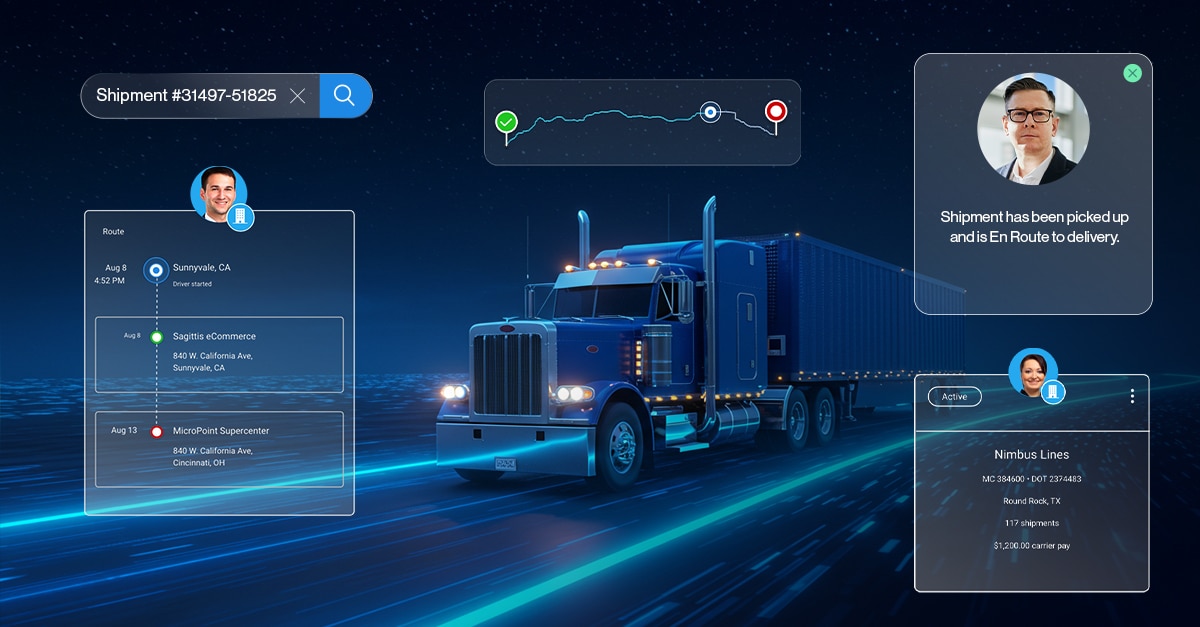The worldwide market size of transportation management systems (TMS) is expected to have an impressive compound annual growth rate (CAGR) of 14.8 percent from now to 2030. This is big news, as the market size already reached a value of $10.45 billion in 2022.
This growth shouldn’t come as too much of a surprise, given the benefits of a TMS in regard to optimizing supply chains, logistics, and overall business operations. When looking for a TMS that’s most beneficial, shippers often struggle to differentiate between TMS service providers in a crowded market. By searching for a few key features, shippers can differentiate between the options to find the right one for their operations.
What Is TMS in Logistics?
TMS in logistics refers to a transportation management system, which is technology that facilitates logistics processes and optimizes operations. The best TMS helps shippers cut costs, find more visibility, and automate processes. It can help businesses keep up with the supply chain and logistics as they scale, and it allows shippers to integrate other technology for full visibility and optimization. The use of transportation management systems has grown in recent years in large part due to modern logistics challenges during the pandemic and afterward. Shippers have faced a dynamic industry that has included volatile supply chains, economic and geopolitical instability, cyber attacks, and an increase in regionalized sourcing. Many shippers have turned to a TMS to gain the resilience, visibility, and efficiency that they struggle to maintain during difficult times.Three Questions to Ask a Transportation Management Provider
How can shippers pick between TMS competitors? Ask transportation management providers these three questions to better compare their offerings.Does Your Service Value Visibility?
Improved visibility helps shippers address problems in real time, communicate up-to-date status information to customers, and stay on top of what’s happening in the supply chain and logistics process as it’s happening. Look for a TMS that provides the best visibility. Also, remember that the key is not JUST visibility, but ACCESS to visibility. Shippers can gain data from a range of sources, including inventory, orders, shipments, and accounting. All of these contribute to enhanced visibility. It’s important to consider end-to-end shipment visibility that takes everything into account, from raw materials and manufacturing to reverse logistics and customer service. With on-demand visibility, shippers can bolster resilience and navigate exceptions.Is Your Service Siloed, or Scalable?
Data silos in logistics mean that data in one area or system is separated from others rather than integrated. Sometimes this happens by accident or because the organization hasn’t put enough resources toward bringing everything together, while sometimes it’s done on purpose. Regardless of the reason it happened, siloed systems limit the tech capabilities and thereby the growth of shippers. Also, bringing together siloed data creates more visibility. Therefore, it’s ideal to look for a scalable service rather than a siloed one. A cloud-based TMS can grow and adapt to meet consumer demand, ensuring that shippers have a partner that can grow alongside their operations instead of holding them back. It’s important to collaborate with other logistics partners as a business grows to manage the increased complexity and optimize processes.Is Your Service Data Diligent?
It’s beneficial for shippers to use key performance indicators (KPIs), which are goals with quantifiable ways to measure progress. Shippers can measure their progress by using data. Without data, shippers struggle to show where they are in relation to their goals, which makes it difficult to communicate progress to stakeholders and customers. Therefore, make sure the service is data diligent. A good TMS offers configurable reporting that shows whether goals have been met or specific progress toward reaching goals. Shippers can consistently keep up with KPIs, including in real time. A TMS transforms raw data into actionable insights, allowing shippers to learn from mistakes and optimize operations over time.Find the TMS That Fits Your Needs
A transport management system helps shippers manage the many challenges of the modern logistics landscape. It provides a way to access data, integrate, scale, and enhance visibility, all from a single platform and with unprecedented ease. Turvo’s TMS provides the capabilities to:- Gain end-to-end visibility
- Cut freight management costs
- Automate the order-to-shipment process
- Create more efficiency while scaling
- Stay on top of the supply chain
- Use TMS supply chain integration to bring data together









